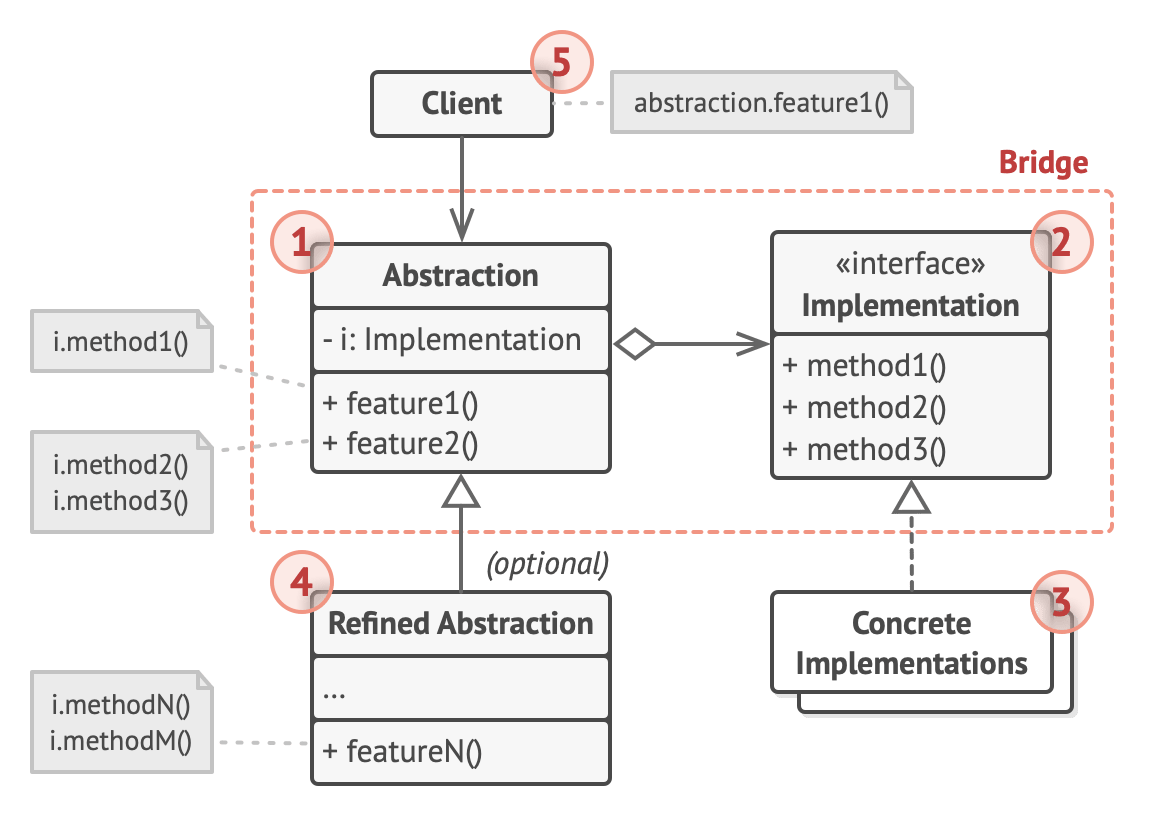Bridge pattern
- It divides business logic or huge class into separate class hierarchies that can be developed independently
- one of these hierarchies (often called
Abstraction) will get a reference to an object of the 2nd hierarchy (Implementation) - the abstraction will be able to delegate some of its calls to the implementations object
- since all implementations will have a common interface and would be interchangeable inside the abstraction
- one of these hierarchies (often called
Why use the Bridge pattern
- it is useful for
- dealing with cross-platform apps
- supporting multiple types of database servers
- working with serveral API providers of a certain kind
- e.g.: cloud platforms, social networks
Structure

-
The Abstraction provides high-level control logic.
- It relies on the implementation object to do the actual low-level work.
-
The Implementation declares the interface that’s common for all concrete implementations.
- An abstraction can only communicate with an implementation object via methods that are declared here.
- The abstraction may list the same methods as the implementation, but usually the abstraction declares some complex behaviors that rely on a wide variety of primitive operations declared by the implementation.
-
Concrete Implementations contain platform-specific code.
-
Refined Abstractions provide variants of control logic. Like their parent, they work with different implementations via the general implementation interface.
-
Usually, the Client is only interested in working with the abstraction.
- However, it’s the client’s job to link the abstraction object with one of the implementation objects.